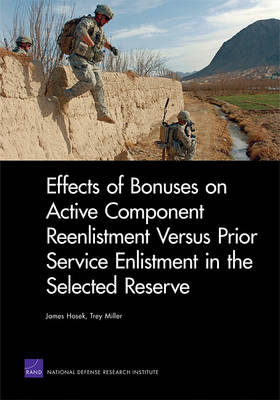The reserves are increasingly being called on to take part in the nation's military operations. This has brought new importance to reserve readiness, but at times during 2004 to 2009 the Army National Guard, the Army Reserve, and the Marine Corps Reserve experienced manning shortfalls that were due in part to an inadequate inflow of recruits. A major source of reserve manpower is the flow of enlisted members from an active component (AC) to a reserve component (RC). This volume examines how effective RC bonuses are in attracting prior service members and, in doing so, explores how AC and RC bonuses interact to affect both AC reenlistment and prior service enlistment in the Selected Reserve. It presents a theoretical model of a service member's decision to stay in the AC, join the RC, or become a civilian; offers empirical estimates of the effect of bonuses, deployment, and other factors on this decision; and develops models of bonus setting based on these estimates. A key finding is that higher RC bonuses increase RC enlistment, but they also decrease AC reenlistment; likewise, higher AC bonuses increase AC reenlistment and decrease RC enlistment. These cross-effects are a result of rational supply behavior and cannot be eliminated, but awareness of them and coordination between AC and RC bonus setters can help ensure that bonus budgets are set appropriately and used efficiently.
- ISBN10 0833052160
- ISBN13 9780833052162
- Publish Date 16 August 2011
- Publish Status Active
- Publish Country US
- Imprint RAND
- Format Paperback (US Trade)
- Pages 108
- Language English
